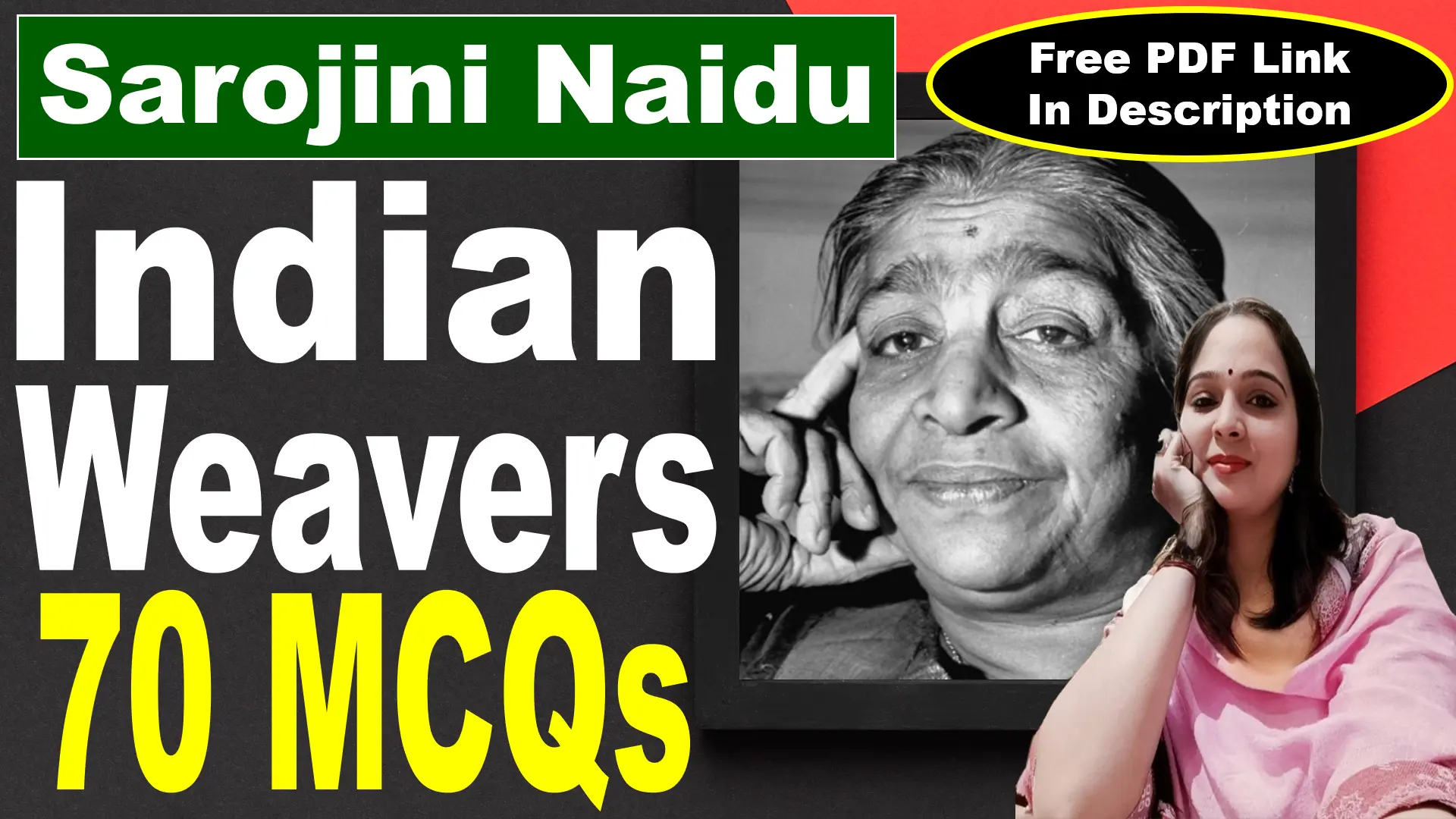What is a significant feature of Kamala Das’s poetry, as seen in The Dance of the Eunuchs?
A) Use of epic similes
B) Bold and confessional tone
C) Classical myths
D) Strict adherence to rhyme
Answer: B) Bold and confessional tone
Explanation: Kamala Das’s poetry is renowned for its confessional tone, characterized by emotional honesty and boldness. In The Dance of the Eunuchs, she examines themes like alienation and societal rejection. This introspective approach allows her to candidly portray marginalized experiences, reflecting her trademark poetic style.
What does the phrase “half-burnt logs from funeral pyres” signify?
A) The eunuchs’ vitality
B) Decay and incompleteness
C) A hopeful transformation
D) A celebration of tradition
Answer: B) Decay and incompleteness
Explanation: This metaphor highlights the eunuchs’ marginalized existence. The comparison to “half-burnt logs” signifies their societal rejection, emotional decay, and incompleteness. Kamala Das uses this imagery to evoke their alienation and emphasize their struggles with identity and acceptance, making their plight more poignant.
How do the eunuchs attempt to beautify themselves in the poem?
A) By wearing jewelry and vibrant clothes
B) By using green tattoos and jasmine flowers
C) By painting their faces with elaborate patterns
D) By adorning themselves with gold ornaments
Answer: B) By using green tattoos and jasmine flowers
Explanation: The eunuchs adorn themselves with green tattoos and jasmine flowers as a means of asserting individuality and seeking acceptance. These efforts to beautify contrast with their inner suffering, symbolizing their attempt to mask emotional pain with outward expressions of joy and identity.
What do the eunuchs’ songs primarily focus on?
A) Nature’s beauty
B) Stories of kings and queens
C) Lovers dying and children left unborn
D) Joyful celebrations of life
Answer: C) Lovers dying and children left unborn
Explanation: The eunuchs sing melancholy songs about unfulfilled desires, such as lost love and children they cannot bear. These themes highlight their emotional isolation and inability to participate in traditional roles of relationships or parenthood, underscoring their societal alienation and personal sorrow.
What role do the anklets and cymbals play in the poem?
A) They symbolize tradition and heritage.
B) They create a festive yet monotonous sound.
C) They represent wealth and prosperity.
D) They highlight the unity among the eunuchs.
Answer: B) They create a festive yet monotonous sound.
Explanation: The anklets and cymbals produce rhythmic sounds that add vibrancy to the performance. However, their repetition introduces monotony, symbolizing the cyclical nature of the eunuchs’ struggles. The festive sounds contrast with the underlying melancholy of their existence, creating a poignant duality.
What does the silence of the crows signify in the poem?
A) The ominous presence of death
B) Nature’s indifference to human suffering
C) An unnatural stillness reflecting tension
D) A symbol of relief and peace
Answer: C) An unnatural stillness reflecting tension
Explanation: The silence of the crows, creatures typically noisy and active, creates an eerie atmosphere. This unnatural stillness reflects the tension and emotional gravity of the eunuchs’ performance. Kamala Das uses this imagery to emphasize the societal discomfort surrounding the eunuchs’ marginalized status.
Which literary device is prominent in the description of “rain that smelt of dust in attics and the urine of lizards and mice”?
A) Hyperbole
B) Imagery
C) Personification
D) Irony
Answer: B) Imagery
Explanation: This vivid sensory description immerses the reader, appealing to the sense of smell. The unpleasant details, such as “dust” and “urine,” symbolize decay and futility, reinforcing the eunuchs’ hopelessness and the barrenness of any relief they might seek in their marginalized existence.
What is the significance of the children’s reactions to the eunuchs in the poem?
A) They are terrified by the eunuchs’ dance.
B) Their stillness reflects a mix of fascination and fear.
C) They celebrate the eunuchs’ presence.
D) They are indifferent to the eunuchs.
Answer: B) Their stillness reflects a mix of fascination and fear.
Explanation: The children’s wide-eyed stillness conveys their conflicting emotions—fascination with the eunuchs’ vibrancy and fear of their perceived otherness. This reaction reflects societal discomfort and alienation, showcasing how even the innocent mirror societal attitudes toward marginalized groups.
What is the primary metaphor for the eunuchs’ lives in the poem?
A) The storm and rain
B) The fiery gulmohur
C) Half-burnt logs
D) Jingling anklets
Answer: C) Half-burnt logs
Explanation: The metaphor of “half-burnt logs” signifies the eunuchs’ incomplete existence and societal rejection. Just as half-burnt logs are remnants of something once whole, the eunuchs are portrayed as living fragments, alienated from mainstream society and unable to fulfill traditional roles.
Which tone does the phrase “vacant ecstasy” in the poem evoke?
A) Joyful and celebratory
B) Nostalgic and reflective
C) Hollow and despairing
D) Energetic and hopeful
Answer: C) Hollow and despairing
Explanation: The phrase “vacant ecstasy” captures the eunuchs’ outward expression of joy that contrasts with their internal void. This tone of hollowness reflects their emotional despair and societal neglect, emphasizing the duality of their vibrant performance and inner suffering.





